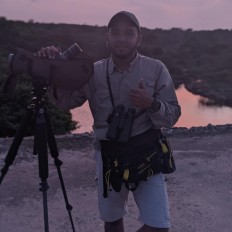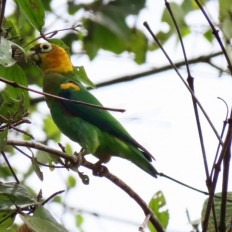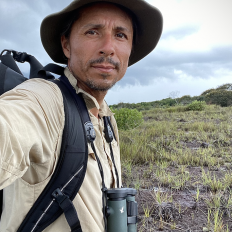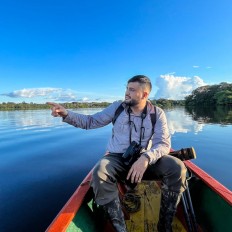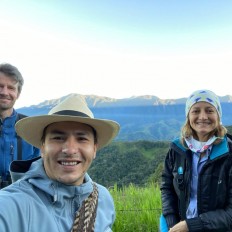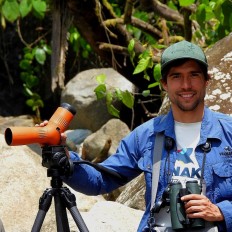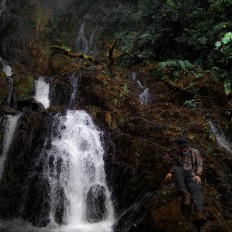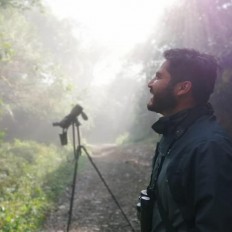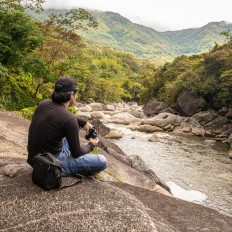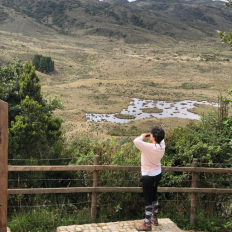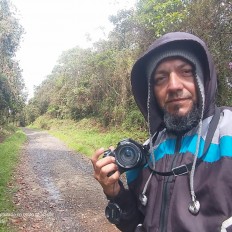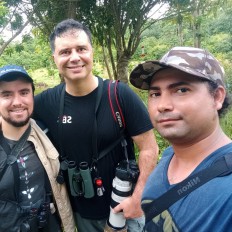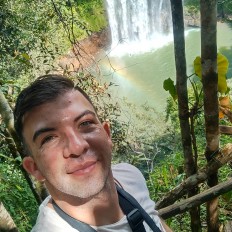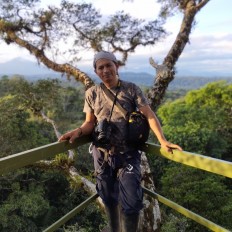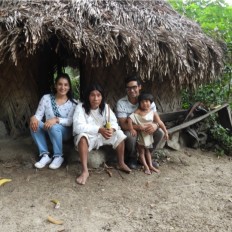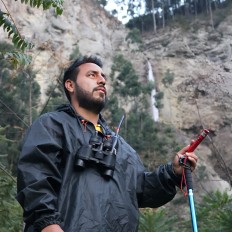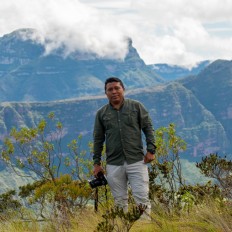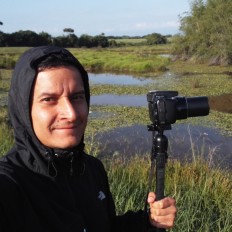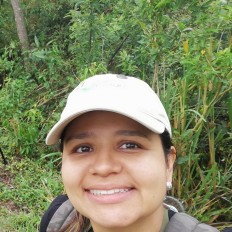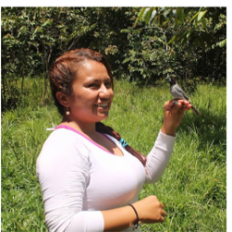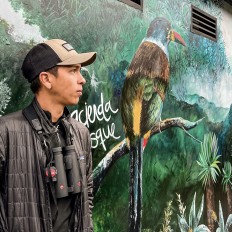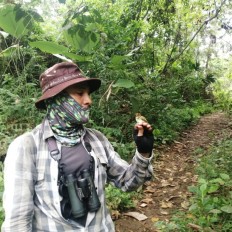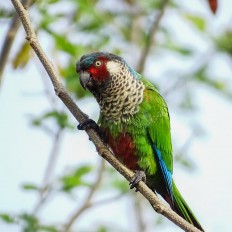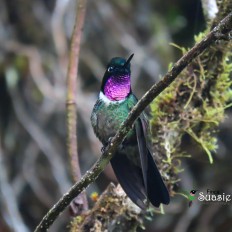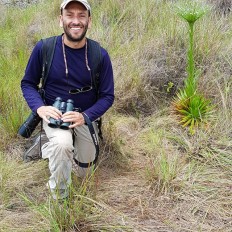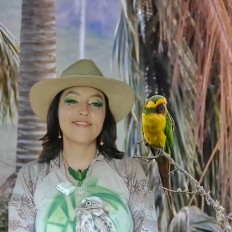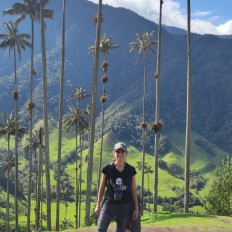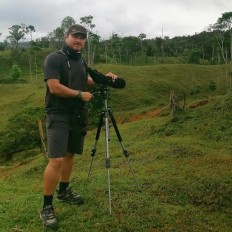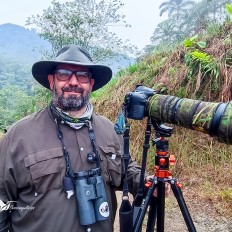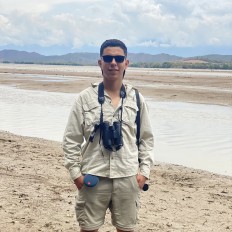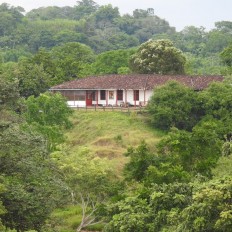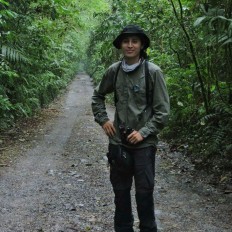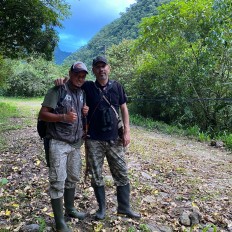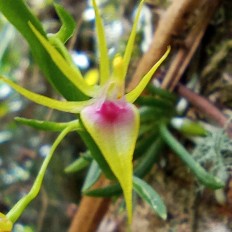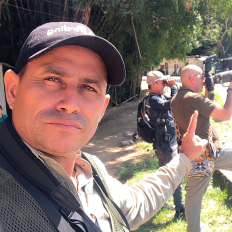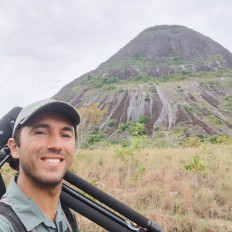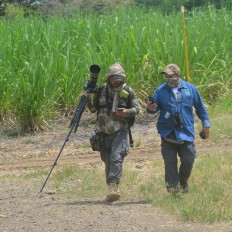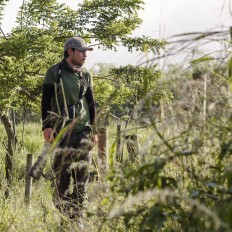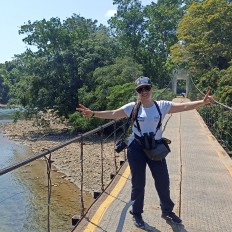Colombia, a captivating country known for its remarkable avian diversity, stands as a dream destination for birdwatchers. With nearly 2000 bird species, including numerous endemics, Colombia proudly holds the title of the world's most species-rich country. This incredible variety of birdlife can be attributed to the diverse range of habitats found within its borders. Moreover, Colombia's unique biodiversity extends beyond birds, encompassing thriving populations of amphibians, orchids, and other taxonomic groups. Recognized by the United Nations as one of the 17 megadiverse countries, Colombia beckons nature enthusiasts from around the globe.
Situated in the northwest corner of South America, Colombia spans an area roughly equivalent to the combined size of France and Spain. The country boasts distinct biogeographical regions that include the Andes, characterized by three separate chains, each hosting a distinct array of species at varying altitudes. The Caribbean region encompasses the awe-inspiring Santa Marta mountains, renowned for their exceptional levels of endemism. The Pacific region, known as the Chocó, stands as one of the world's foremost biodiversity hotspots. The Orinoquía, dominated by seasonal wet savannas, and the Amazon, a globally significant and diverse ecosystem, complete Colombia's rich tapestry of natural wonders.
While Colombia's modern history has been marred by internal conflicts and social challenges that persist today, significant progress has been made towards ensuring safe travel in large parts of the country. In recent years, the number of birders visiting Colombia and the growth of the national birding community have been remarkable. Birdwatching groups, bird fairs, and exceptional birding guides and tour operators can now be found throughout the country. Given the vast size and incredible diversity of Colombia, multiple visits are often necessary to fully appreciate its avifauna. Once one experiences the allure of this captivating country, a return journey becomes almost inevitable.
Colombia is Colombia, a paradise captivating country known for birds and its remarkable avian diversity, stands as a dream destination for birdwatchers. No country in the world has more With nearly 2000 bird species than Colombia (nearly 2000 species, including dozens numerous endemics, Colombia proudly holds the title of endemics). the world's most species-rich country. This diversity is partly explained by the large incredible variety of habitats. Not only birdlife can be attributed to the diverse range of habitats found within its borders. Moreover, Colombia's unique biodiversity extends beyond birds, but also many encompassing thriving populations of amphibians, orchids, and other taxonomic groups including amphibians or orchids thrive here, which is one of the reasons why Colombia was identified groups. Recognized by the United Nations as one of the 17 megadiverse countries.
countries, Colombia is located beckons nature enthusiasts from around the globe.
Situated in the northwest corner of the South American continent and is America, Colombia spans an area roughly equivalent to the combined size of France and Spain combined. Spain. The main country boasts distinct biogeographical regions are that include the Andes, which in Colombia split up into 3 characterized by three separate chains, each hosting a distinct chains and harbour different array of species at each altitudinal level; varying altitudes. The Caribbean region encompasses the Caribbean, including the awe-inspiring Santa Marta mountains with mountains, renowned for their extremely high level exceptional levels of endemism; the endemism. The Pacific (Chocó), region, known as the Chocó, stands as one of the top world's foremost biodiversity hotspots in the world; the hotspots. The Orinoquía, which consists mainly of dominated by seasonal wet savannas; savannas, and the Amazon, one of the most important a globally significant and diverse ecosystems on the planet.
Although Colombia’s ecosystem, complete Colombia's rich tapestry of natural wonders.
While Colombia's modern history is marked has been marred by internal conflicts and social problems challenges that are still partially unsolved persist today, significant progress has been made towards ensuring safe travel in large parts of the country are nowadays safe to travel to. country. In recent years, both the number of birders visiting birders Colombia and Colombia’s the growth of the national birding community have grown rapidly and there are now birdwatching been remarkable. Birdwatching groups, bird fairs, excellent and exceptional birding guides and tour operators almost everywhere in can now be found throughout the country. Due to Given the vast size and the incredible diversity of the country, several Colombia, multiple visits are needed often necessary to get a good insight into Colombia’s fully appreciate its avifauna. Anyone who has experienced Once one experiences the allure of this fascinating country once will surely come back.captivating country, a return journey becomes almost inevitable.
Colombia is a paradise for birds and a dream destination for birdwatchers. No country in the world has more bird species than Colombia (nearly 2000 species, including dozens of endemics). This diversity is partly explained by the large variety of habitats. Not only birds, but also many other taxonomic groups including amphibians or orchids thrive here, which is one of the reasons why Colombia was identified by the United Nations as one of the 17 megadiverse countries.
Colombia is located in the northwest corner of the South American continent and is roughly the size of France and Spain combined. The main biogeographical regions are the Andes, which in Colombia split up into 3 distinct chains and harbour different species at each altitudinal level; the Caribbean, including the Santa Marta mountains with their extremely high level of endemism; the Pacific (Chocó), known as one of the top biodiversity hotspots in the world; the Orinoquía, which consists mainly of seasonal wet savannas; and the Amazon, one of the most important and diverse ecosystems on the planet.
Although Colombia’s modern history is marked by internal conflicts and social problems and some problems that are still partially unsolved today, large parts of the country are nowadays safe to travel to. In recent years, not only both the number of vsiting visiting birders but also and Colombia’s internal national birding community has have grown rapidly and there are now birdwatching groups, bird fairs and fairs, excellent birding guides and tour operators almost everywhere in the country. Due to the size and the diversity of the country, several visits are needed to get a good insight into Colombia’s avifauna. Anyone who has experienced this fascinating country once will surely come back.
Colombia is a paradise for birds and a dream destination for birdwatchers. No country in the world has more bird species than Colombia (nearly 2000 species, including dozens of endemics). This diversity is partly explained by the large variety of habitats. Not only birds, but also many other taxonomic groups including amphibians or orchids thrive here, which is one of the reasons why Colombia was identified by the United Nations as one of the 17 megadiverse countries.
Colombia is located in the northwest corner of the South American continent and is roughly the size of France and Spain combined. The main biogeographical regions are the Andes, which in Colombia split up into 3 distinct chains and harbour different species at each altitudinal level; the Caribbean, including the Santa Marta mountains with their extremely high level of endemism; the Pacific (Chocó), known as one of the top biodiversity hotspots in the world; the Orinoquía, which consists mainly of seasonal wet savannas; and the Amazon, which does not need much introduction one of the most important and is obviously is yet another world by itself.
diverse ecosystems on the planet.
Although Colombia has a complicated Colombia’s modern history is marked by internal conflicts and social problems and some problems are still unsolved today, large parts of the country are nowadays safe to travel to. In recent years years, not only the number of vsiting birders but also Colombia’s internal birding community has grown rapidly within the country and there are now birdwatching groups, bird fairs and excellent birding guides almost everywhere in the country. Several trips Due to the size and the diversity of the country, several visits are needed to get a good insight into Colombia’s diversity. This shouldn’t be difficult, because anyone avifauna. Anyone who has experienced the this fascinating country once will surely come back.
Colombia is a paradise for birds and a dream destination for birdwatchers. No country in the world has more bird species than Colombia (nearly 2000 species, including dozens of endemics). This diversity is partly explained by the large variety of habitats. Not only birds, but also many other taxonomic groups including amphibians or orchids thrive here, which is one of the reasons why Colombia was identified by the United Nations as one of the 17 megadiverse countries.
Colombia is located in the northwest corner of the South American continent and is roughly the size of France and Spain combined. The main biogeographical regions are the Andes, which in Colombia split up into 3 distinct chains and harbour different species at each altitudinal level; the Caribbean, including the Santa Marta mountains with their extremely high level of endemism; the Pacific (Chocó), known as one of the top biodiversity hotspots in the world; the Orinoquía, which consists mainly of seasonal wet savannas; and the Amazon, which does not need much introduction and is obviously is yet another world by itself.
Although Colombia has a complicated history and some problems are still unsolved today, large parts of the country are safe to travel to. In recent years the birding community has grown rapidly within the country and there are now birdwatching groups, bird fairs and excellent birding guides almost everywhere in the country. Several trips are needed to get a good insight into Colombia’s diversity. This shouldn’t be difficult, because anyone who has experienced the country once will surely come back.

